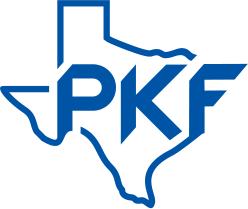Earlier this year, the U.S. Treasury Department and Internal Revenue Service certified approximately 625 economically-distressed areas throughout Texas, including more than 100 communities located within the greater Houston area, as Opportunity Zones under a new program designed to spur private investment and economic development in exchange for certain federal tax incentives.
Following is a summary of frequently asked questions about the new program.
Q: What is an Opportunity Zone?
A: An Opportunity Zone is an economically-distressed area where new investments, under certain conditions, may be eligible for federal tax incentives.
Q: Who created the new Opportunity Zone program?
A: The Opportunity Zone program was newly created under the Tax Cuts and Jobs Act of 2017. In March 2018, the heads of each U.S. state, territory, and Washington, D.C. were asked to identify 25 percent of their low-income population census tracts to be nominated as Opportunity Zones. On June 14, 2018, more than 8,700 census tracts were certified by Treasury Secretary Steven Mnuchin.
Q: What is the purpose of Opportunity Zones?
A: Opportunity Zones are an economic-development tool – that is, they are designed to spur economic development and to create new jobs in certain distressed communities.
Q: How do Opportunity Zones spur economic development?
A: Opportunity Zones are designed to spur economic development by providing federal tax incentives to investors who reinvest certain eligible gains into a Qualified Opportunity Fund (QOF).
Q: What is a Qualified Opportunity Fund or QOF?
A: A QOF is an investment vehicle organized as either a corporation or a partnership for the purpose of investing in eligible property located in an Opportunity Zone.
Q: How does a corporation or partnership become certified as a QOF?
A: To become a QOF, a business entity organized as a corporation or a partnership self-certifies by completing an IRS form and filing the form with the QOF’s federal tax return for the taxable year (the QOF’s federal tax return must be timely filed, including extensions).
Q: Do investors need to live or work in an Opportunity Zone to qualify for the federal tax incentives?
A: No. Investors may receive the federal tax incentives even if they don’t live, work, or have a business in an Opportunity Zone.
Q: What type of federal tax incentives are available under the Opportunity Zone program?
A: First, upon timely reinvesting certain eligible gain into a QOF, investors may temporarily defer such gain until the earlier of – 1. the date on which they sell or exchange their QOF investment, or 2. Dec. 31, 2026. Second, investors may permanently exclude 10 percent of their reinvested gain if they hold their QOF investment for five years (an incremental 5 percent; total of 15 percent) of the reinvested gain may be permanently excluded if investors hold their QOF investment for seven years. Third, investors who hold their QOF investment for at least 10 years may permanently exclude the entire gain from the sale or exchange of their interest in the QOF.
Q: What type of gain is eligible for the federal tax deferral?
A: Only capital gain is eligible for the federal tax deferral. Additionally, the capital gain must not arise from a sale or exchange with a related person.
Q: What is the timing requirement for investors to reinvest their capital gain into a QOF to qualify for the federal tax deferral?
A: Investors must reinvest their capital gain into a QOF during the 180-day period beginning on the date of the sale or exchange giving rise to the capital gain.
This article was originally posted in the Houston Business Journal.

